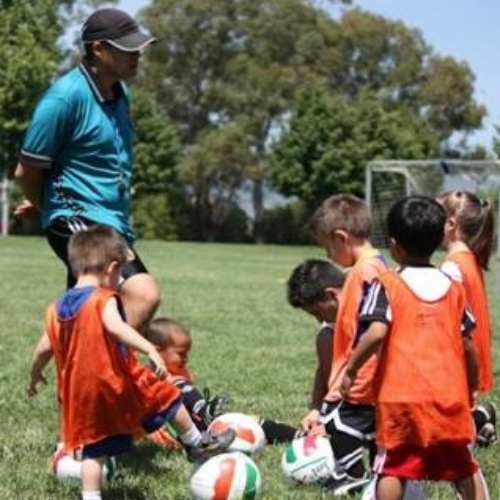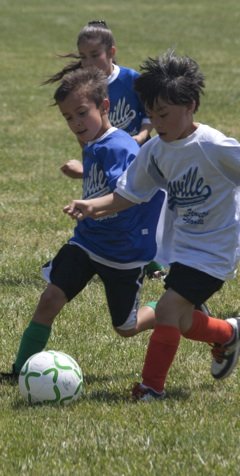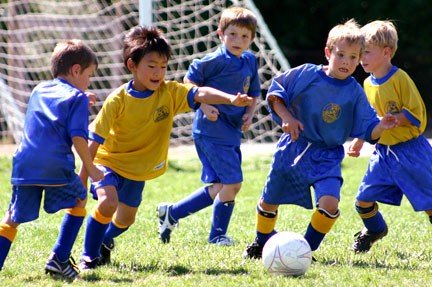⚽ Soccer Rules for Kids — Understanding the Game Made Simple
Soccer — or football, fútbol, footy — starts with the simplest soccer rules for kids, and that’s exactly where its beauty lives.
When you understand the basics, you begin to understand the game itself — a universal rhythm that connects players everywhere through movement, awareness, and teamwork.
After 25 years in youth initiation soccer, I’ve learned that these simple rules open the door to much more than sport.
They teach kids how to listen, decide, cooperate, and grow. That’s the quiet power behind every pass and every play.
At its best, soccer invites children into what I call the flow state — where learning, joy, and focus meet.
All they need is the choice to participate and the desire to be productive.
That’s our foundation: Be Active. Be Productive.
When a player asks, “Coach, how did I do?” my answer is simple:
👉 Were you active?
👉 Were you productive?
The same reflection belongs to us as parents and coaches:
Was my presence active? Was it productive for the players in my care — or for my own child?

🌱 Understanding Soccer’s Simple Rules
Soccer is built on clarity — a ball, a field, and a few rules that guide everything.
Learning those basic soccer rules helps kids enter the game confidently and develop a sense of rhythm and fairness early on.
Start here: Rules of Soccer and How to Play Soccer.
Each guide explains the fundamentals in simple language any parent or child can follow.
🧭 The Five Pillars of Formation
Our approach to player development is built on five connected pillars:
- Biomechanics – movement and balance
- Technical – ball skills and first touch
- Cognitive – decision making and awareness
- Soccer IQ – understanding the game
- Emotional Intelligence – confidence and team spirit
Learn more on the Five Pillars of Soccer page.
👨👩👧 Soccer Wisdom for Parents and Coaches
Whether you’re coaching a U6 team or supporting from the sidelines, you’re shaping how kids experience the game.
Explore guidance built from decades on the field:
These articles blend coaching technique with child development insight — because teaching kids soccer is really about teaching awareness, patience, and purpose.

🌍 Learn. Reflect. Play.
Soccer is simple — and within that simplicity lies its power to teach, connect, and inspire.
Kids-Play-Soccer.com is your resource for understanding how the game works and why it matters.
Learn the rules, reflect on the lessons, and go play.
⚽ Why Soccer Rules Matter So Much
The beauty of soccer rules for kids is that they don’t just organize the game — they shape how young players think. When a child learns that the ball must stay in bounds, or that teamwork wins possession, they’re also learning awareness, patience, and respect.
Every whistle, throw-in, and restart teaches rhythm and control. These are lessons that extend beyond the field. Kids begin to understand that every space has boundaries, that movement has timing, and that their choices matter. That’s why we treat the rules not as limits but as invitations — they create the structure where creativity can thrive.
That’s why soccer rules for kids are so powerful; they’re not limits, but guides that help young players learn awareness, timing, and teamwork.
🌍 The Global Game, Local Lessons
Soccer is the world’s game because its language is universal. A child in California, Argentina, or Japan can step onto a field and understand the same basic soccer rules.
In my 25 years of coaching youth soccer, I’ve seen kids from every background find confidence simply by kicking the ball and hearing a coach say, “Good idea.”
The rules give them a foundation; the joy gives them the motivation. When we honor both, learning becomes play — and play becomes learning.
🧠 What Coaches and Parents Can Do
Parents often ask, “What should I focus on when my child starts soccer?”
My answer: focus on activity and productivity — the same two questions I ask my players.
Were they active? Were they productive?
Encourage effort before perfection. Celebrate awareness before skill. That’s how confidence grows naturally. Whether you coach a U6 team or simply watch from the sideline, your tone shapes your child’s experience. Be curious, be positive, and remember: kids don’t learn from lectures — they learn from love, repetition, and play.
🏆 Building a Foundation That Lasts
At Kids-Play-Soccer.com, the goal is to provide tools and understanding — not rigid systems.
Here you’ll find articles, tips, and soccer coaching resources that reflect decades of practical field experience. We keep things simple, because soccer itself is simple.
If you’re new to the game, begin with:
Each page expands on what’s introduced here — helping you build understanding layer by layer, just as players build skills over time.
💬 Final Thought
Soccer reminds us that growth is a cycle. Kids learn, make mistakes, adjust, and try again.
That’s why this site exists — to pass on what the game has taught me:
Keep it simple. Stay active. Stay productive. And most of all, let the game teach.
Choose your age group
4-6 y/o |
7-8 y/o |
9-12 y/o |

